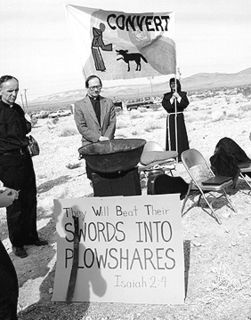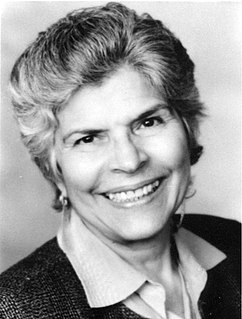
The American Paint Horse is a breed of horse that combines both the conformational characteristics of a western stock horse with a pinto spotting pattern of white and dark coat colors. Developed from a base of spotted horses with Quarter Horse and Thoroughbred bloodlines, the American Paint Horse Association (APHA) breed registry is now one of the largest in North America. The registry allows some non-spotted animals to be registered as "Solid Paint Bred" and considers the American Paint Horse to be a horse breed with distinct characteristics, not merely a color breed.

The American Public Health Association (APHA) is a Washington, D.C.-based professional organization for public health professionals in the United States. Founded in 1872 by a group of physicians, including Dr. Stephen Smith and Dr. Henry Hartshorne, APHA has more than 25,000 members worldwide. The Associations defines itself as: "APHA champions the health of all people and all communities. We Strengthen the public health profession. We speak out for public health issues and policies backed by science. We are the only organization that influences federal policy, has a 140-plus year perspective and brings together members from all fields of public health." It defines its mission as: "Improve the health of the public and achieve equity in health status."

The Nevada Desert Experience is a name for the movement to stop U.S. nuclear weapons testing that came into use in the middle 1980s. It is also the name of an anti-nuclear organization which continues to create public events to question the morality and intelligence of the U.S. nuclear weapons program, with a main focus on the United States Department of Energy's (DOE) Nevada Test Site.
Patient advocacy is an area of specialization in health care concerned with advocacy for patients, survivors, and caregivers. The patient advocate may be an individual or an organization, often, though not always, concerned with one specific group of disorders. The terms patient advocate and patient advocacy can refer both to individual advocates providing services that organizations also provide, and to organizations whose functions extend to individual patients. Some patient advocates work for the institutions that are directly responsible for the patient's care.

A stock horse is a horse of a type that is well suited for working with livestock, particularly cattle. The related cow pony or cow horse is a historic phrase, still used colloquially today, referring to a particularly small agile cattle-herding horse; the term dates to 1874. The word "pony" in this context has little to do with the animal's size, though the traditional cow pony could be as small as 700 to 900 pounds and less than 14 hands high.
The Platinum-Cobalt Scale is a color scale that was introduced in 1892 by chemist Allen Hazen (1869–1930). The index was developed as a way to evaluate pollution levels in waste water. It has since expanded to a common method of comparison of the intensity of yellow-tinted samples. It is specific to the color yellow and is based on dilutions of a 500 ppm platinum cobalt solution. The colour produced by one milligram of platinum cobalt in one litre of dissolved water is fixed as one unit of colour in platinum-cobalt scale. The ASTM has detailed description and procedures in ASTM Designation D1209, "Standard Test Method for Color of Clear Liquids ".
The American Paint Horse Association (APHA) is a breed registry for the American Paint Horse. It is currently headquartered in Fort Worth, Texas. It was founded in 1965 with the merging of two different color breed registries that had been formed to register pinto-colored horses of Quarter Horse bloodlines. One of these organizations was the American Paint Quarter Horse Association and the other was the American Paint Stock Horse Association.
Paniya is one of the Dravidian languages of India. It is spoken by the Paniya people, a scheduled tribe with a majority of its speakers in the state of Kerala. The language is also known as Pania, Paniyan and Panyah. It belongs to the Dravidian family of languages. According to the 1981 Census, there were 63,827 speakers of Paniya which includes 56,952 in Kerala, 6,393 in Tamil Nadu, 482 in Karnataka. Most of its speakers are found in the Wayanad, Kozhikode, Kannur and Malappuram districts of Kerala, and to the west of the Nilgiri Hills in Tamil Nadu.
APHA color, also referred to as the Hazen scale, and more appropriately as the Platinum Cobalt(Pt/Co) scale, is a color standard named for the American Public Health Association and defined by ASTM D1209. It was originally intended to describe the color of waste water, but its usage has expanded to include other industrial applications. APHA color is a color scale sometimes referred to as a "yellowness index" that is used to assess the quality of liquids that are clear to yellowish in color.
The Sedgwick Memorial Medal, given by the American Public Health Association, was established in 1929 for distinguished service and advancement of public health knowledge and practice. It is considered the APHA's highest honor.

Helen Rodríguez Trías was a pediatrician, educator and women's rights activist. She was the first Latina president of the American Public Health Association (APHA), a founding member of the Women's Caucus of the APHA, and a recipient of the Presidential Citizens Medal. She is credited with helping to expand the range of public health services for women and children in minority and low-income populations around the world.
Apha is a genus of moths in the family Eupterotidae.
Apha floralis is a moth in the family Eupterotidae. It was described by Arthur Gardiner Butler in 1881. It is found in Nepal.

Apha horishana is a moth in the family Eupterotidae. It was described by Matsumura in 1927. It is found in Taiwan and southern China.
Apha huabeiana is a moth in the family Eupterotidae. It was described by Yang in 1978. It is found in China.
Apha subdives is a moth in the family Eupterotidae. It was described by Francis Walker in 1855. It is found in Bangladesh, India, Bhutan, Myanmar, Thailand, Vietnam and China.
Apha aequalis is a moth in the family Eupterotidae. It was described by Felder in 1874. It is found in Japan.








